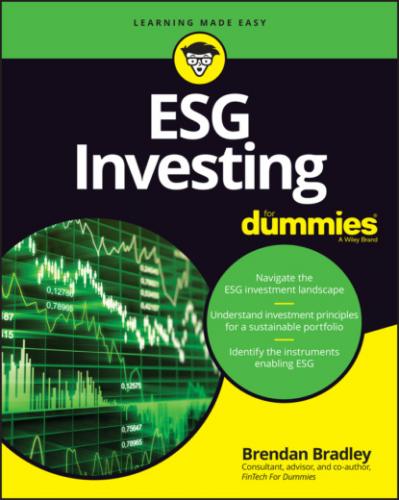Consequently, transparent measurement and disclosure of sustainability performance is now deemed to be an essential part of effective business practices, and a necessity for maintaining trust in business as a force for good. Corporate reporting is a means by which stakeholders, including investors, can identify and measure companies’ performance, just as companies themselves use reporting internally to inform decision-making. Financial reporting has developed as a result of internationally recognized accounting standards that bring transparency, accountability, and competence to financial markets around the world. Therefore, while sustainability disclosure is inevitably more complex than financial reporting, internationally recognized sustainability standards will be the basis for calculating relevant ESG ratings.
Exploring What ESG Is (and Isn’t)
In recent years, the term “ESG” has generally become synonymous with socially responsible investment. However, ESG should be seen as more of a risk management framework for evaluating companies and not as a stand-alone investment strategy. ESG measures the sustainability and societal impact of an investment in a company. These criteria help better determine the future financial performance of companies. Likewise, impact investing is more about the type of investments a manager is targeting, while ESG factors are part of an assessment process to apply non-financial factors to a manager’s analysis in identifying material risks and growth opportunities. Also, impact investing seeks to make a measurable, positive, environmental, or social effect with the investments that a fund manager purchases, whereas ESG is a “means to an end,” serving to identify non-financial risks that may have a material impact on an asset’s value.
Moreover, ESG is often incorrectly commingled with terms such as corporate sustainability and corporate social responsibility (CSR). While some overlap exists, these terms aren’t interchangeable:
Corporate sustainability is an umbrella term used to describe the long-term creation of stakeholder value by encompassing opportunities and managing risks resulting from economic, environmental, and social developments. To many companies, corporate sustainability is about “doing good” and doesn’t require any set conditions.
Corporate social responsibility is an embedded management concept where companies incorporate the concerns of key stakeholders into their operations and activities. In comparison, ESG assesses a company’s ESG practices, together with more traditional financial measures.
Finally, ESG is also commonly intermingled with ethical investing. However, taking an ESG approach is effectively a precursor to the point of investing. It provides a framework that allows you to consider ‘E,’ ‘S,’ and ‘G’ issues facing a company and to score them either individually or collectively to identify where they sit relative to each other. This leads investors to consider stocks that may be “best-in-class” from an ESG score perspective or exclude them entirely because, for example, their environmental score doesn’t reflect their values. Ethical investing involves selecting investments based on ethical or moral principles. Such investors typically avoid “sin stocks,” such as those related to gambling, alcohol, or firearms, which can be implemented via an ESG exclusions strategy (where sin stocks are explicitly excluded from a portfolio).
The following sections look at the different components of ESG, including financially material indicators, how those indicators can differ according to industry sector, and how various ESG strategies can be applied across these factors. These elements can be analyzed in the ESG Cube, which represents the intersections between these factors.
Defining the breadth of ESG
Unlike common financial ratios, there aren’t a common set of ratios that neatly define what a good ‘E,’ ‘S,’ or ‘G’ score looks like. And whether you should aggregate the three siblings together or you should consider each one individually depends on your determination of what issues you believe are most relevant from an ESG perspective. Indeed, some of the factors may be more material to some stocks than others. For example, the environmental risks associated with a bank will be less material than those facing a mining company, while such risks may be counterbalanced by more concerns over governance with a bank. Also, to what degree should you be concerned, and what data or methodology will you use to gauge that concern? As you can see, ESG analysis brings an entirely new set of indicators that you need to consider, which can result in a complex analysis that isn’t reasonable for a layperson to calculate.
Of course, investment managers are offering to take all of that hassle away from you and present you with products that incorporate the myriad of factors in different ways. And as the investment world has moved toward passive investment, a number of these products will be index driven. To ensure that you’re familiar with these new products, and that they closely track the performance of established benchmarks, many of the new products will be ESG variations of traditional indexes, such as the S&P 500 or FTSE 100 indexes. So, they represent what you “know and love” with just a few exclusions here, some different weightings there, or a bias or tilt toward or away from given stocks. This should be easy for most investors to comprehend.
Then there is the version for sophisticated investors, including large asset owners such as pension funds and family offices, where that approach won’t pass the “smell test” given the level of fees they are paying for investment management. They expect a much more active management approach, with full consideration of the complex interdependencies that can be analyzed in this process. One way to visualize the approach that an asset manager could take is to consider a matrix, or a three-dimensional cube. An asset owner considers at least three dimensions to be important:
What are the key industry sectors that exhibit the greatest ESG risks or opportunities?
Which ESG execution strategy
